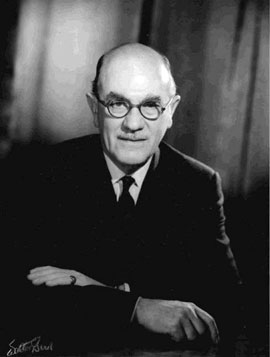Michael Perrin: a scientist with links to the atom bomb
 Michael Perrin©Charles Perrin
Michael Perrin©Charles Perrin
Explore -the properties and environmental impact of polythene.
Discuss – the importance of scientific observation, enquiry and recording.
Discover – the important role of polythene in World War II.
- Personal history
- Subject areas
- Possible topics
- Suggested activities
- What is polythene?
- Properties of polythene
- Problems with polythene
- The importance of scientific observation
- Sources
- Further resources
Subject Areas
| Science | Role of science in development; the importance of enquiry, observation and recordingThe properties and hazards of household materials |
|---|---|
| Design and technology | Understanding the types and uses of household packagingThe environmental impact of products and recycling issues |
| History | Britainsince 1930 – the importance of Radar |
Possible Topics
- Discoveries where scientists have noticed something unusual happening and where observation skills have led to important breakthroughs/ inventions (eg. penicillin, polythene, the Wardian case)
- The properties of polythene and why it is such a useful product
- Recycling – what happens next?
- Radar (radio detection and ranging): its importance in World War II and how it is used today (air traffic control, weather forecasting)
Suggested Activities
- What did people used before polythene? In groups, interview grandparents, parents or shop-keepers. List all the things made from polythene and consider what we could use instead (eg. paper, glass, wood, cloth). What are their relative advantages and disadvantages?
- Some of us put our used plastic in recycling bins. What products are made using recycled polythene? Look at recycling information on packaging
- Think of other ways of using our old plastic bags and bottles and make something with them (eg a collage or big plastic man)
What is polythene?
- There are two types of plastics: Thermosetting plastics, eg. formica, perspex and the hard plastic that was used in old telephones – if you heat these types of plastics they become solid, and if you heat them again they degrade into organic carbon; the other type is Thermoplastics – if you heat this type of plastic it becomes soft and you can mould it, eg. polythene
- You get low density polythene such as sheeting and high density polythene which is more rigid (eg. a kitchen spatula)
- Polythene comes from Ethylene Gas, a product of the oil industry
- It is the most widely used plastic with an annual production of approximately 80m metric tons
- Its primary use is in packaging (eg. plastic bags and films used to cover fresh food in supermarkets), and geo-membranes (these are impermeable membranes used for lining canals, ponds and for containing waste)
Properties of polythene
It is a very versatile product, which is why it is used so much:
- Flexible (even high density polythene like a kitchen spatula)
- Transparent, especially when it is thin (for example plastic bags, bubble wrap, wrapping on magazines)
- You can add colour (for example to make drinks’ bottles)
- Strong, especially when it is thicker
- Not brittle, therefore doesn’t break easily
- Impermeable – does not allow water to pass through – important for packaging and to keep things hygienic
- Can be used at low temperatures – so useful for making products used in low temperatures (like freezer bags)
- Relatively easy and cheap to make – you don’t need sophisticated machinery or lots of technical knowledge
- Flammable
- Feels waxy, especially low density polythene
Problems with polythene
- Polythene is not biodegradable except when exposed to ultra violet sunlight, and even then it takes a long time before it finally degrades. (Some bacteria can degrade polythene in less than 3 months but otherwise it can take years.)
- It is estimated that in an average year, 13 billion plastic bags are distributed to consumers and that each plastic bag is used on average for only 20 minutes before it is thrown away (source: The Independent 26th March 2008)
- On average we only recycle 1 plastic bag in every 200 we use
- Scientists estimate each plastic item could last at least 400 years
- 8% of the world’s oil production is used to make plastic
- The world produces 2 million tonnes of plastic per year, 96% of which is NOT recycled
- Plastic debris, laced with chemicals and often ingested by marine animals, can injure or poison wildlife (source Scientific American)
The importance of scientific observation
Observation is an important part of science. The first production of polythene by Michael Perrin and his team was a “happy accident”. The team used their observation and deduction skills to work out what was special about their first experiment. There are many other examples in the history of science where scientific observation has led to important inventions. For example:
- Alexander Fleming noticed the penicillin mould which led to the invention of an important antibiotic
- the Wardian Case made it possible to bring back plants from foreign countries (also see Wikipedia)
Sources
- The Oxford Dictionary of National Biography (Please note you will need to be a member of a UK library or educational institution to access ODNB articles)
Conversations with:
- Maurice Freeman, a scientist who for many years worked in the plastics division of ICI; he was very helpful in describing polythene and its properties
- Nicola Perrin, grand-daughter of Michael Perrin and also a scientist, who is writing a biography of her grandfather; she commented on a draft of the worksheet.
Further Resources
Find out more – explanations and images on how radar works (How Stuff Works)
Find out more – teaching the differences between the properties of an object and the material from which it is made (University of York Science Education Group)
This page was last updated on December 2nd, 2020.
